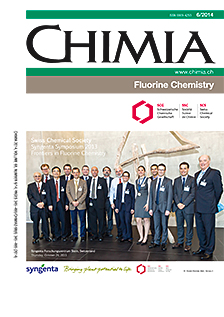Joy and Flustration with Organofluorine Compounds – A Fluorous Autobiography
DOI:
https://doi.org/10.2533/chimia.2014.348Keywords:
Cf3-substituted dendrimers, Enantiopure aliphatic cf3-derivatives, F-effects on peptide folding, F-labelling and tagging, Fluoro-organic compoundsAbstract
An overview is given about our work on fluoro-organic compounds, published or described in PhD theses between 1977 and 2013. After a discussion of structural F-effects and F-tagging applications the material is ordered by the various areas of our research, in which we have used and/or prepared F-derivatives: Li- and Ti-organic compounds and reagents, polylithiated hydroxy-esters and nitroalkanes, the enantiopure trifluoro-lactic, -Roche, and -3-hydroxy-butanoic acids as toolbox for the preparation of numerous F3C-substituted compounds, including natural products and dendrimers, and fluoro-?-, -?-, and -?-amino acids, as well as peptides with back-bond-bound fluorine. The strong influence on ?-peptide folding by fluoro-substituents in the ?-position of ?-amino-acid residues is discussed in terms of the ?-fluoro-amide conformational effect. Finally, some cases of totally unexpected effects on reactivity and structure exerted by fluoro-substitution are presented and taken as examples for our use of the terms flustrate and flustration in connection with organo-fluorine chemistry.Downloads
Published
2014-06-26
Issue
Section
Scientific Articles
License
Copyright (c) 2014 Swiss Chemical Society

This work is licensed under a Creative Commons Attribution-NonCommercial 4.0 International License.
How to Cite
[1]
D. Seebach, Chimia 2014, 68, 348, DOI: 10.2533/chimia.2014.348.







